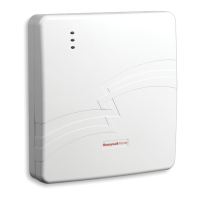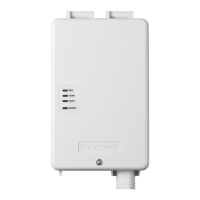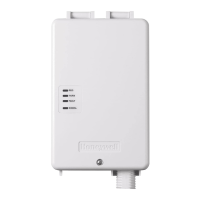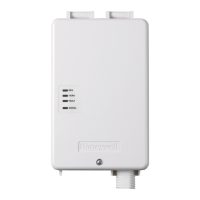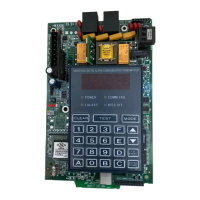Section 3: Programming the Communicator
23
PROMPTS OPTIONS DESCRIPTION
30
Notify Panel Of_
(Neither Fault)
[Neither fault]
[Both IP and Cell
Faults]
This prompt appears only if comm. path is set to IP & Cell.
If "Both IP and Cell Fault" is selected, the device will only notify the
control panel if both communication paths fail, but will always send
notification of either failure to the central station.
(If the "Cell Fault Time" and "IP Fault Time" options are set to zero,
faults will not be reported.)
Press the [space] key to scroll through choices.
UL/ULC: Must be set to "Both IP and Cell Faults".
31
Flt Rel ON Y/N
(N)_
[Y], [N]
If enabled, the fault open collector output is normally energized to
ground, and de-energizes (open circuit) in the event of a communicator
fault. For conditions that trip the fault relay refer to Supervision
Features in Section 1.
Set to [Y] if fail-safe mode is desired.
See Wiring the Fault Relay in Section 2.
UL/ULC: Must be set to "Y."
32
Pwr Loss Rpt Y/N
(Y)_
[Y], [N]
Sends a primary power loss report to the central station within 1-3
hours after its detection. A restore report is sent within 1-3 hours after
power is restored.
UL Standard Installations (using transformer and battery): Must be set
to "Y".
ULC Commercial Fire & Burglary Installations (powered from the
control panel): Must be set to "N."
33
Low Bat Rpt Y/N
(Y)_
[Y], [N]
Sends a low-battery report when a low battery condition exists. A low
battery restore is automatically sent when the low battery condition
clears.
UL Standard Installations (using transformer and battery): Must be set
to "Y".
ULC Commercial Fire & Burglary Installations (powered from the
control pan`el): Must be set to "N."
34
Tamper Rpt Y/N
(Y)_
[Y], [N]
Sends a tamper report when the communicator detects a tamper
condition. A tamper restore is automatically sent when the tamper
condition clears.
UL/ULC: Must be set to "Y."
Important Information Regarding Zone Input Options
ECP mode supports two optional hardwire zone input triggers by making connections to the communicator’s zone 6 and/or
zone 7 terminals and programming the appropriate zone trigger options below.
Each zone input can be programmed to cause an alarm under one of the following conditions:
(V+), where a positive voltage causes an alarm for normally low connections (voltage trigger, NO, NC)
(V–), where a ground trigger causes an alarm for normally high connections (open collector, NO, NC)
(EOLR) End of Line Resistor, where the input is supervised by a 2K EOL resistor. The zone can be triggered by
open collector, voltage trigger, NO, NC.
UL/ULC: Set V+ to inverted, and V– as non-inverted.
In addition to the above, zones can be programmed for an Inverted Trigger, where the alarm and normal states of the
zones are inverted; this can serve a fail-safe supervisory purpose for certain installations.
These zone inputs can also be programmed for restore reporting, and for delayed reporting (NOT for UL installations),
which allows time for the user to abort false alarms.
NOTE: Optional hardwire zones report in ADEMCO High-Speed format.
35
Enable Zn6 Y/N
(N)_
[Y], [N] Enables alarm reporting for zone 6.
If [N], skip to Prompt 40: "Enable Zn7."
36
Zn6 Trigger Type
(V+)_
(V+)
(V–)
(EOLR)
Selects the triggering method for this zone input.
Press the [space] key to scroll through choices.
UL/ULC: V+ must be set as inverted and V– as
non-inverted.
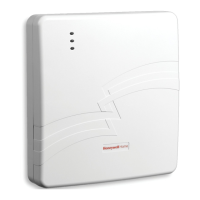
